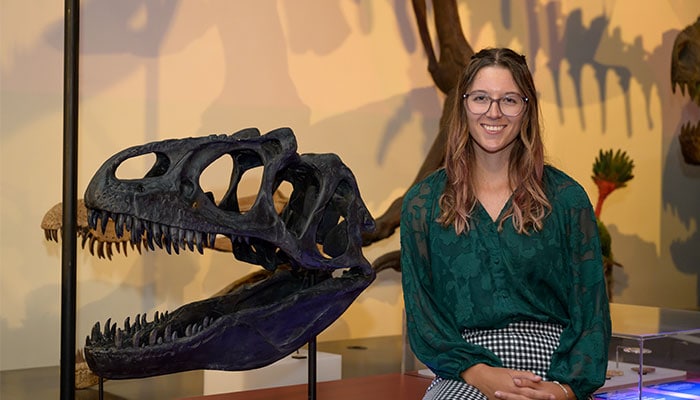Real name and nick name:Digger. But I also go by Digger Dog, Digs and Dig…
When a farmer finds a fossil

Visualise yourself trudging through the bush, the eucalyptus leaves rustling in the wind, the dirt covering your shoes. Or you might be walking in a different place, close to water, your toes sinking into the sand. And then, suddenly… you spy something unusual. A fossil.
When retired chicken farmer Mihail Mihailidis stumbled upon a fossil in a sandstone slab at his Central Coast property, little did he know he’d unveiled one of Australia’s most incredible fossil treasures.
While the fossil was found 30 years ago it has only this month been officially identified by palaeontologists as a Triassic amphibian, offering a window into the life of a creature that roamed the Sydney basin 240 million years ago.
Meanwhile, on Nigel McGrath’s property near Gulgong, another chapter in Australia’s geological history unfolded. It was three years ago when Mr McGrath found a fossilised leaf, embedded in rock, which led to a team of researchers finding multiple discoveries on the site – thousands of specimens, including of fossils of small animals, frozen in time for 15 million years.
The question remains, however: What steps should you take if you stumble on a fossil, unusual bones or an Indigenous artefact on a rural property?
Macquarie University Biological Sciences Masters student Sally Hurst grew up on a farm in Gunning and she sometimes wondered what people should do if they found a fossil.
“It has always fascinated me. So I did some research and it was really difficult to find any information. I realised there was a gap in the knowledge. So I started my ‘Found a Fossil’ website so people would know how to take the first steps,” Ms Hurst says.
“Now I’m excited that people are sending me photos of things that might be fossils or dinosaur tracks, or artefacts they’ve had in the family for years that have been passed down the family.”


“I’m passionate about palaeontology, archaeology and also an enthusiastic science communicator and this project has combined all my interests.”
Ms Hurst encourages people to photograph, record the GPS location, determine if there’s other similar objects nearby and then report their find.
“The good news is that if you find a fossil on your private property in NSW, then you own it and you can decide what to do with it. But you still should inform your local council or museum, because if it’s a rare find, then it will contribute to our scientific knowledge.”
Nick Savage, Policy Director, Environment NSWFA, says the ‘Found a Fossil’ website is a good resource for farmers who might have found interesting artefacts on the land that ended up in a shed or, perhaps, tucked away in a kitchen drawer.
“No doubt there’ll be farmers who, over the years, would have picked something up on their property and thought it was interesting – then they get busy so they put it away … and possibly forget about it,” Mr Savage says.
“Historically, people are very connected to the land and there’d be great interest in wanting to discover what people and creatures once roamed on their property. Now there’s a resource farmers can use to help identify any fossils or bones. It’s a pathway to new discoveries with possible historical significance and that can be very exciting.”
On her website, Ms Hurst also includes contact details for Heritage NSW and other heritage organisations in each state, and institutions such as museums, that can provide more information about heritage discoveries. It also links you to Fossils Australia to identify your fossil.
“People are very curious, they love to know who were the people who lived here and what animals lived here thousands of years ago. So there is interest there but also fear – people worry that they’ll get in trouble. So they stay quiet.”
“But hopefully my ‘Found a Fossil’ website can be a nice way to get information as I’m a third party, I don’t work for the government and if you want to return your find to the community, we can make that happen.”









Hi I am Elias Matthew Bildner I am 11 years old and on December 15th 2023 I am going to my teachers farm and I want to find some fossils I already know that there are 30 year old cow bones in the field that need dug up so my teacher told me that there’s arrowheads sticking out of the ground and fossils too and I collect and sell them to People for money, thank you so much for your information I really appreciate it check out my email at 34676@my.apse.org